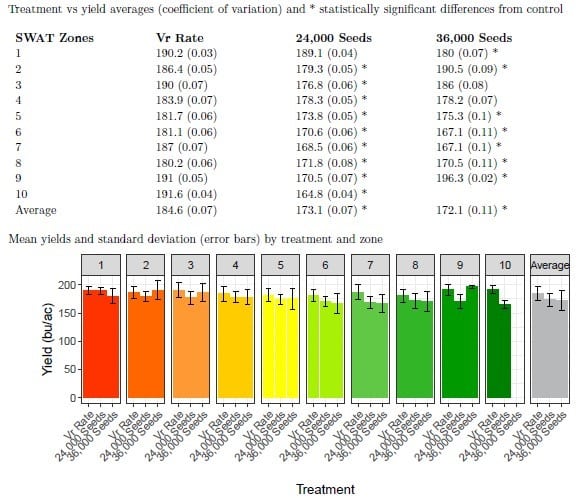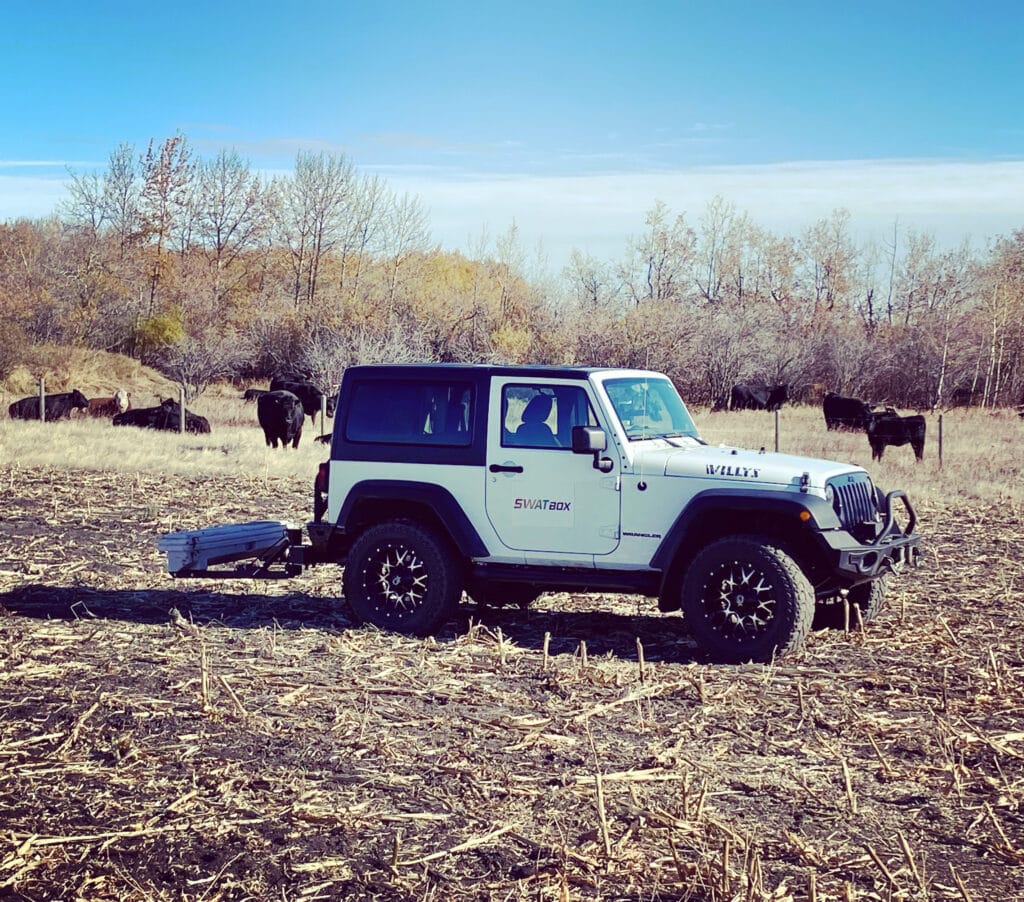SWAT MAPS for Corn: Strategies for a Productive Growing Season
Amber Knaggs, BSc., PAg.
Regional Manager, MB
I love corn. It’s a crop that just has a lot going on. In Western Canada, it usually means you have a planter, invested in equipment and a dryer, and you are ready for the long growing season. And when that combine and corn header is finally parked, and you were lucky enough to complete the field work, you quickly move into planning season.
This means the “off season” or “winter planning” season is upon us. But this thinking that all the decisions are made during a few months of the year is not true. There are a handful of ‘aha’ moments throughout the growing season that seem to bring reminders of lessons not learnt. Or just a change of weather that highlights an issue that wasn’t previously apparent.
So, during this planning season of looking at the paperwork at your desk or on your screen and trying to plan for the best next season, remember the basics and what happened as your ‘aha’ moments. A soil test and a SWAT MAP can be an essential part of your planning. Below are a few corn related examples.
Salinity and Corn
Corn requires sufficient water. Salinity causes germination issues and poor growth. Soil salinity affects water availability to the corn crop, and any water stress to the corn affects its potential.

Table 1 illustrates the wide range of salinity and % yield reduction in corn. 2 mmhos/cm can reduce yield by 10%. However, at 4 mmhos/cm, that number potentially jumps to 50% yield reduction. And 5.5 mmhos/cm is potentially 100% yield reduction due to salts. This illustrates how it is not enough to know an area is just saline but leads to the question of “how saline is it?”. Is your soil (or zone) a 2 mmhos/cm or is your soil a 4 mmhos/cm? Or are those poor areas 5.5 or more? Some fields are just not suitable for corn – we can’t VR the population enough to account for zones that won’t thrive - these areas should be planted to some other more tolerant crop. It is crucial to have the most detailed information to make that decision.
Don’t forget the micros!
Accurate fertility is essential for proper crop development, yield, and profitability. Having good soil test data to guide these decisions is important. Here are a few micronutrients to keep in mind for your ‘aha’ moments.
Cu by zone
Low copper availability is affected by low %OM, high pH, and highly correlated to soil textures. In the SWAT soil sample below, we see a trend where copper is lowest in Zone 1 and increases to Zone 10. A soil test value of less than 0.3 ppm, and low %OM would be a red flag that copper may be an issue.

Tissue testing is often used to complement information from soil tests. The Zone 1 tested below has a tissue nutrient level for Cu of 2 ppm which indicates it’s in the nutrient deficient range. The DRIS index value is -101 which indicates this nutrient is most limiting. When both the nutrient level and DRIS index are low, it strengthens the confidence that this nutrient is deficient in the plant.


Micronutrient issues are often patchy, and it may be difficult to decide if you will get a response to applying a micronutrient treatment. Is the crop you are growing responsive or more sensitive to that nutrient? Is one of the other macronutrients more limiting? Or is there more of that nutrient at depth? If the soil is testing below a critical level, that usually means there is a higher chance of response. Sometimes you must live through an ‘aha’ moment, to know that something like a micronutrient is the issue.
Zn by zone
Critical levels of nutrients change by crop. A critical level for zinc of 0.4ppm may be suitable for wheat or barley crops, but with corn that critical level moves to 1.0ppm. Zinc is usually highly stratified with little found in subsoil. Eroded knolls that have lost a lot of topsoil, and accordingly zinc, are at a higher risk of deficiency, especially when pH is high as well. The SWAT MAP soil test shows low Zn levels in Zone 1 and increasing to Zone 10.

The complimentary tissue sample from the Zone 1, shows a deficient Zn nutrient level in crop and a -99 DRIS index value. These tests indicate Zinc is deficient in the plant tested.



Rarely does an entire field require a recommendation for a micronutrient treatment, making it a great fit for VR application. If most of the field is not testing below critical levels, apply only to the areas where it’s more likely you will have a response and ROI.
VR populations with a SWAT MAP
VR populations can be a large part of the planning process as covered in this blog Corn, soybeans, and the ultimate SWAT VR planting strategy. In the following example from 2024, a Southern Manitoba farm, created a VR rate for the entire field, then added strips of lower population of 26,000 seeds/acre, and a higher population of 36,000 seeds/acre.

Yield data was supplied by the client and analyzed by zone.

The data from this year, indicates that statistically, there were differences found between the lower 24,000 plants/acre population and the VR rate on most zones except zone 1. And then, for the higher 36,000 plants/acre population, only zones 3 and 4 were not significantly different than the VR rate. The VR rate corn population had the highest average yield.
I would challenge farms to work on trials that increase their potential agronomic and economic performance. Let’s plan on learning something new and not miss another entire growing season without trying different strategies. After all, you don’t want to be at this same planning stage next year, without having had a good ‘aha’ moment or two.
Make it a plan for any crop
Even if you don’t grow corn, many of these examples work for several crops throughout Western Canada, or anywhere else in the world. A SWAT MAP provides a lot of value and can be fundamental in your farm strategy during the season. Take this time to plan with your SWAT MAPS provider and keep moving forward.





